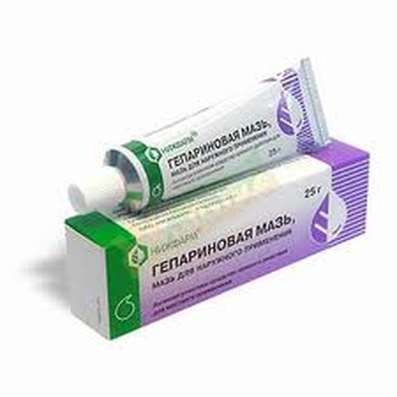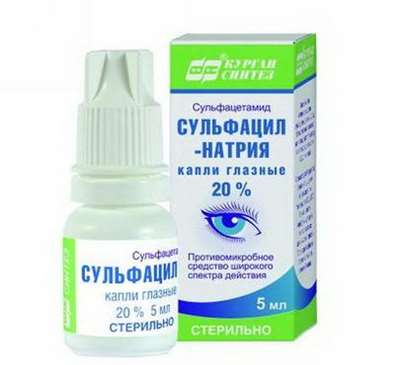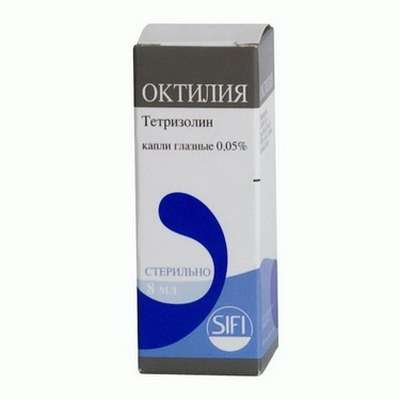Instruction for use: Nobritem
I want this, give me price
Dosage form: capsules
Active substance: Medazepam*
ATX
N05BA03 Medazepam
Pharmacological group:
Anxiolytics
The nosological classification (ICD-10)
F48 Other neurotic disorders: Neurosis; Neurological diseases; Neurotic disorders; Neurotic condition; Psychoneurosis; Anxious-Neurotic Conditions; Chronic neurotic disorders; Emotional reactive disorders
F70-F79 Mental retardation
I10 Essential (primary) hypertension: hypertension; Arterial hypertension; Arterial hypertension crisis course; Essential Hypertension; Essential hypertension; Essential hypertension; Essential hypertension; Essential hypertension; Primary hypertension; Arterial hypertension, complications of diabetes; The sudden increase in blood pressure; Hypertensive disorders of blood circulation; hypertensive condition; hypertensive crises; arterial Hypertension; malignant Hypertension; Hypertonic disease; hypertensive crises; accelerated hypertension; malignant hypertension; The aggravation of hypertensive disease; Transient hypertension; Isolated systolic hypertension
I15 Secondary hypertension: Arterial hypertension, complications of diabetes; hypertension; The sudden increase in blood pressure; Hypertensive disorders of blood circulation; hypertensive condition; hypertensive crises; hypertension; arterial Hypertension; malignant Hypertension; hypertensive crises; accelerated hypertension; malignant hypertension; The aggravation of hypertensive disease; Transient hypertension; hypertension; Arterial hypertension; Arterial hypertension crisis course; renovascular hypertension; Hypertension symptomatic; Renal hypertension; Renovascular hypertension; renovascular hypertension; Symptomatic hypertension
I47.1 Nadzheludochkovaya tachycardia: Nadzheludochkovaya paroxysmal tachycardia; Nadzheludochkovaya tachyarrhythmia; Nadzheludochkovaya tachycardia; Nadzheludochkovye rhythm disturbances; Supraclavicular paroxysmal tachycardia; Nadzheludochkovye tachyarrhythmias; Nadzheludochkovye tachycardias; Neurogenic sinus tachycardia; Orthodontic tachycardia; Paroxysmal supraventricular tachycardia; Paroxysm of supraventricular tachycardia; Paroxysm of supraventricular tachycardia with WPW syndrome; Paroxysm of atrial tachycardia; Paroxysmal supraventricular tachyarrhythmia; Paroxysmal supraventricular tachycardia; Polyotopic atrial tachycardia; Atrial arrhythmia; Atrial True Tachycardia; Atrial tachycardia; Atrial tachycardia with AV blockade; Reperfusion Arrhythmia; The Berzold-Jarish Reflex; Recurrent persistent supraventricular paroxysmal tachycardia; Symptomatic ventricular tachycardia; Sinus tachycardia; Supraventricular paroxysmal tachycardia; Supraventricular tachyarrhythmia; Supraventricular tachycardia; Supraventricular extrasystole; Supraventricular arrhythmias; Tachycardia from the AV joint; Tachycardia supraventricular; Orthodordic tachycardia; Sinus tachycardia; Nodular tachycardia; Chaotic polyotopic atrial tachycardia; Wolff-Parkinson-White syndrome
I47.2 Ventricular tachycardia: Pirouette torsade de pointes; Symptomatic ventricular tachycardia; Pirouette tachycardia with myocardial infarction; Ventricular arrhythmia; Ventricular paroxysmal tachycardia; Ventricular tachyarrhythmia; Ventricular tachycardia; Ventricular tachycardia; Life-threatening ventricular arrhythmia; Stable ventricular tachycardia; Stable monomorphic ventricular tachycardia; Paroxysmal bidirectional spindle-shaped ventricular tachycardia; Paroxysmal ventricular tachycardia
I95 Hypotension: Arterial hypotension; Arterial hypotension; Age-related hypotension; Hypotension arterial; Hypotonic disease; Hypotonic reactions; Postural hypotension; Symptomatic hypotension; Essential hypotension
I99 Other and unspecified disorders of the circulatory system: angiopathy; Arterial angiopathy; Atherosclerotic angiopathy; Hemodynamic right heart defects; Hemodynamic defect of the right heart; coronary angiopathy; Infringement of blood circulation; Violation of circulation; Violation microcirculation in organs and tissues; Peripheral circulatory disorders; Disorders of the peripheral circulation in the extremities; circulatory failure; Hemodynamic instability occlusion of arteriovenous origin; Acute circulatory failure; Psevdostenokardicheskie state; Psevdostenokardicheskoe disorder; circulatory disorder; Cardiovascular diseases; Vascular insufficiency; Thrombosis arteriovenous shunt; Thrombosis with prosthetic heart valves; Deterioration of blood circulation in the pelvic organs; Functional failure of the cardiovascular system; Functional disorders of the cardiovascular system; Chronic arterial insufficiency; Chronic heart failure; Age-related vascular disease; The risk of thrombosis
K31.3 Pylorospasm, not elsewhere classified: Spasm of smooth muscles in diseases of the digestive system; Spasms of smooth muscles of the gastrointestinal tract; Stomach cramps; Spasms of the pylorus; Spastic conditions of the digestive tract; Pylorospasm; Pylorus spasm
R10.4 Other and unspecified pain in the stomach area: Abdominal pain syndrome; Abdominal pain; Gastrointestinal spasm; Intestinal colic; Colic intestinal; Colic in young children; Colic in newborns; Sensation of stomach overflow; Rezi in the abdomen; Spasm of smooth muscles in diseases of the digestive system; Spasm of bile ducts; Spasm of the biliary tract; Spasm of intestine; Spasm of the digestive system; Spasms of smooth muscles of the gastrointestinal tract; Stomach cramps; Spasms of the digestive tract; Spastic conditions of the digestive tract; Bowel Teeth; A feeling of overflow of the stomach; Baby colic
R11 Nausea and vomiting: Postoperative vomiting; Nausea; Vomiting; Vomiting in the postoperative period; Vomiting medication; Vomiting in the background of radiation therapy; Vomiting uncontrollable; Vomiting in radiation therapy; Persistent vomiting; Indomitable vomiting; Postoperative nausea; Vomiting with chemotherapy; Vomiting of the central genesis; Vomiting with cytotoxic chemotherapy; Persistent hiccups; Repeated vomiting
R45.1 Anxiety and agitation: Agitation; Anxiety; Explosive excitability; Internal stimulation; Excitability; Excitation; Excitation acute; Psychomotor agitation; Hyperexcitability; Motor excitement; Cessation of psychomotor agitation; Nervous excitement; Restlessness; Night trouble; Acute stage of schizophrenia with excitation; Acute mental agitation; Paroxysm of excitation; Overexcitation; Increased excitability; Increased nervous excitability; Increased emotional and cardiac excitability; Increased agitation; Mental arousal; Psychomotor agitation; Psychomotor agitation in psychoses; Psychomotor agitation of an epileptic nature; Psychomotor paroxysm; Psychomotor fit; Symptoms of Excitation; Symptoms of psychomotor agitation; The state of agitation; A state of anxiety; Excitation status; A state of heightened concern; The state of psychomotor agitation; Conditions of anxiety; Excitation conditions; The state of excitement in somatic diseases; Excitation level; Feelings of anxiety; Emotional arousal
R45.4 Irritability and anger: Neurosis with increased irritability; Outbursts of anger; Anger; Resentment; Increased irritability; Increased irritability of the nervous system; Irritability; Irritability in neuroses; Irritability in psychopathic disorders; Symptoms of irritability; Dysphoria
R45.7 Condition of emotional shock and stress, unspecified: Exposure to stress factors; Exposure to extreme situations; Neuropsychic stresses; Professional stress; Psychoemotional overload and stress; Psychoemotional stress; Stressful condition; Stress; Stress loading; Stressful condition; Stressful situations; Stress of everyday life; Chronic stress; Long-term emotional stress; Psychological stress in air flights; Psychoemotional stress in stressful situations
Composition and release form
1 capsule contains 5 mg of medazepam; in a cardboard box 3 blisters for 10 pcs.
Pharmachologic effect
Mode of action - anticonvulsant, soothing, anxiolytic, myorelaxing.
Interacts with benzodiazepine receptors and enhances GABAergic transmission in the central nervous system.
Indication of the drug Nobritem
Primary neurovegetative syndrome (internal stimulation, irritability, excitability, difficulty concentrating, etc.); Psychoneurovegetative cardiovascular (tachycardia, hypo- or hypertensive circulatory disorders, pseudostenocardiac disorders, etc.) and gastrointestinal (sensation of a lump in the throat, overflow of the stomach, nausea, spasms, etc.) syndromes; Psychoneuro-respiratory syndromes (hyperventilation, choking sensation, etc.); Psychoneurosis, neurosis organs and psychosomatic disorders, characterized by emotional stress, anxiety, irritability and internal stress.
Contraindications
Hypersensitivity (including to other benzodiazepines).
Side effects
Dizziness, drowsiness, tiredness, constipation.
Interaction
Strengthens the effects of drugs that depress the central nervous system.
Dosing and Administration
Inside, in mild and moderate cases - 5 mg 3-4 times a day or 10 mg 2 times a day; in severe cases - 10 mg 3 times a day; Duration of treatment is not less than 15 days.
Precautionary measures
It is necessary to refrain from activities that require increased attention and rapid mental and motor reactions. To stop reception is recommended gradually (the syndrome of "cancellation" is possible).
Storage conditions of the drug Nobritem
Keep out of the reach of children.
Shelf life of the drug Nobritem
5 years.
Do not use after the expiry date printed on the package.

 Cart
Cart





